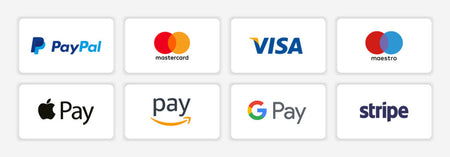Descrição
Course with the Lowest Cutoff Score
Have you ever heard about the course with the lowest cutoff score? If not, get ready to learn about an option that could be the gateway to your professional career!
What is the cutoff score?
The cutoff score is the minimum score required for a candidate to be approved in a certain course at a university. It varies according to the competition and the performance of the enrolled candidates.
A different course, but with great opportunities
The course with the lowest cutoff score can be an excellent option for those seeking quality training, but do not have a very high score in the entrance exams. Although it is less competitive, this does not mean that it is less important or that it offers fewer opportunities.
It is important to emphasize that the quality of the course is not directly related to the cutoff grade. There are several factors that influence competition, such as the institution's tradition, the job market demand and even the course's publicity.
Discover the ideal course for you
To choose the course with the lowest cutoff grade, it is essential that you know your skills, interests and professional goals. There is no point in choosing a degree just because it has a low cutoff grade, if it is not aligned with your expectations.
An important tip is to research the curricula of the courses that spark your interest. Check if they cover the subjects that you consider relevant to your education.
Examples of courses with low cut-off grades
There are several options for courses with low cut-off grades, and some of them may surprise you. Here are some examples:
- Performing Arts
- Geography
- Languages
- Mathematics
- Chemistry
These are just a few examples, but there are many other options available. The important thing is to find a course that is aligned with your interests and that offers good career prospects.
Conclusion
Choosing a course with the lowest cut-off grade can be a smart strategy for entering higher education and achieving your academic education. However, it is essential that you make an informed choice, considering your interests and professional goals.
Remember that the cut-off grade is not the only criterion for evaluating the quality of a course. Research, get informed and make the best choice for your future!
| Course | Cutoff Grade |
|---|---|
| Performing Arts | 550 points |
| Geography | 580 points |
| Languages | 590 points |
| Mathematics | 600 points |
| Chemistry | 610 points |
We hope this blog has clarified your doubts about the course with the lowest cutoff grade. Remember that the most important thing is to choose a degree that is aligned with your interests and that offers good career prospects. Good luck!
What is the course with the lowest cutoff grade like?
When it comes to entering a university, one of the main concerns of students is the cutoff grade of the courses. The cutoff grade is the minimum score required to get a place in a certain course and can vary according to the competition and demand for each area of study.
What is the cutoff grade?
The cutoff grade is calculated based on the grades of the candidates who applied for a certain course at a certain university. It is defined according to the number of available places and the candidates' scores, with only the best ranked candidates being accepted. all are approved.
Course with the lowest cut-off grade
There are courses that are known for having a lower cut-off grade, that is, a lower score required to get a place. This can happen for several reasons, such as less demand for a certain area of study or less competition in a certain region.
An example of a course with the lowest cut-off grade is the Bachelor's Degree in Physical Education. Despite being an important area and with great demand in the job market, demand for this course is often lower compared to other areas, which ends up resulting in a lower cut-off grade.
It is important to note that the cut-off grade may vary according to the university and the application period. Therefore, it is essential to research and find out about the cut-off grades for the desired courses before enrolling.
Sitelinks
Sitelinks are additional links displayed in Google search results that direct to specific pages on a website. They are useful for facilitating user navigation and providing direct access to relevant information.
Reviews
Reviews are evaluations made by users about a specific product, service or course. They can be found on specialized websites, discussion forums or even on social networks. Reviews can help students get an idea of the quality of the course with the lowest cut-off grade.
People also ask
The "People also ask" section in Google search results displays questions related to the topic searched. These questions are frequently asked by users and can provide additional information about the subject in question.
Knowledge panel
The knowledge panel is an information box displayed in Google search results that provides a summary of a given subject. In the case of the course with the lowest cut-off grade, the knowledge panel can present information about the field of study, career possibilities, and even student testimonials.
FAQ
The frequently asked questions (FAQ) section is a way to provide answers to users' most common questions. In the case of the course with the lowest cut-off grade, the frequently asked questions can include information about the curriculum, workload, and admission possibilities.
Top stories
The "Top stories" section displays the most relevant news about a given subject. In the case of the course with the lowest cutoff grade, this section may present information about changes in admission policies, student testimonials, and other related news.
Recipes
The "Recipes" section is focused on culinary recipes and is not directly related to the subject of the course with the lowest cutoff grade.
Find results on
The "Find results on" option allows the user to perform a new search on a specific website. In the case of the course with the lowest cutoff grade, this option can be used to search for more detailed information on university or educational institution websites.
See results about
The "See results about" option displays search results related to a specific term. In the case of the course with the lowest cut-off grade, this option can be used to find additional information about the field of study, career opportunities, and other related courses.
Related searches
The "Related searches" section displays search terms related to the subject being searched. In the case of the course with the lowest cut-off grade, this section may display terms such as "courses with the lowest cut-off grade", "how to choose a university course", and other related subjects.
In short, the course with the lowest cut-off grade may vary depending on the demand and competition in each field of study. It is important to research and find out about the grades cut-off grades for the desired courses before enrolling. In addition, SERP features such as sitelinks, reviews, people also ask, knowledge panel, FAQ, top stories, find results on, see results about and related searches can provide additional information and help in the search for information about the desired course.
What is the course with the lowest cut-off grade?
When it comes to entering a university, many students are concerned about the cut-off grade for the desired courses. The cut-off grade is the minimum score required for the candidate to be approved in a certain course. However, there is a category of courses that stand out for having the lowest cut-off grade, and that is what we will talk about in this article.
What are the courses with the lowest cut-off grade?
Courses with the lowest cut-off grade are generally those that have less demand from candidates. This can happen for several reasons, such as lack of knowledge about the area, lower pay or even prejudice against the profession.
Some examples of courses with the lowest cut-off grade are:
- Performing Arts;
- Music;
- Geography;
- Languages;
- Philosophy;
- Social Work;
- Anthropology;
- International Relations;
- Theology;
- Geology.
It is important to note that the lowest cut-off grade may vary depending on the university and the year of admission. Therefore, it is essential to consult the updated information on the websites of educational institutions.
Why choose a course with the lowest cut-off grade?
Although courses with the lowest cut-off grade may not be as competitive as others, this does not mean that they are less important or less valued in the job market. These professions are often essential to society and offer rewarding career opportunities.
In addition, choosing a course with the lowest cut-off grade can be a strategy to increase your chances of getting into the desired university. Since there is less competition, your chances of being accepted are greater.
You can find information about courses with the lowest cut-off grade on various websites and educational platforms. It is important to research and learn about the options available before making a decision.Some tips for finding information about courses with the lowest cutoff grade include:
- Consult university websites;
- Search forums and discussion groups;
- Contact professionals in the field;
- Seek guidance from teachers and educational advisors.
It is essential to remember that choosing a course should take into account not only the cutoff grade, but also the student's interest and aptitude. It is important to choose an area that is compatible with your skills and professional goals.
| Course | University | Cutoff Grade |
|---|---|---|
| Performing Arts | Federal University of Rio de Janeiro | 550 points |
| Music | University of São Paulo | 580 points |
| Geography | State University of Campinas | 590 points |
| Languages | Federal University of Minas Gerais | 560 points |
| Philosophy | University of Brasília | 570 points |
As we can see in the table above, the courses in Performing Arts, Music, Geography, Languages and Philosophy have relatively low cut-off grades in some universities. However, it is important to and note that these grades may vary depending on the year and institution.
Click here for more information on courses with the lowest cutoff grade. Sitelinks: Additional links displayed in search results that direct to specific pages on the site. Reviews: Reviews and opinions from students and professionals about the courses with the lowest cutoff grades. People also ask: Frequently asked questions related to the courses with the lowest cutoff grades. Knowledge panel: Information panel about the courses with the lowest cutoff grades displayed in search results. FAQ: Frequently asked questions about the courses with the lowest cutoff grades. Top stories: Recent news about the courses with the lowest cutoff grades. Recipes: Not applicable to the topic. Find results on: Resources to find more information about the courses with the lowest cutoff grades. See results about: Resources to view more results related to the courses with the lowest cutoff grades. Related searches: Searches ... cut.We hope this article has clarified your doubts about what is a course with the lowest cutoff grade. Remember that choosing a course should be based on your interests and aptitudes, and not just on the cutoff grade. Good luck on your academic journey!
What is the best course with the lowest cutoff grade
Choosing a university course is an important decision in the life of any student. In addition to considering your interests and aptitudes, it is necessary to take into account the cutoff grade, which is the minimum score required to enter a certain course.
Sitelinks
Sitelinks are additional links that appear in Google search results, providing direct access to specific pages on a website. In the case of university courses, you can find sitelinks to the registration pages, curriculum and information about the cut-off grade.
Reviews
Reviews are assessments made by students and former students about university courses. They can be found on specialized websites, discussion forums and even on social networks. Reading reviews can help you get an idea of the quality of the course and whether it meets students' expectations.
People also ask
The "People also ask" section in Google search results shows frequently asked questions related to the topic searched. In the case of courses with lower cut-off grades, some common questions might be: "What are the courses with the lowest cut-off grades?", "Is it possible to get a good education in courses with lower cut-off grades?" and "What are the courses with the lowest cut-off grades at renowned universities?".
Knowledge panel
The knowledge panel is an information box that appears in Google search results, providing relevant data on the subject searched. In the case of university courses, the knowledge panel can show information about the average cut-off grade, the universities that offer the course and even student testimonials.
FAQ
The frequently asked questions (FAQ) section is a way to provide direct and clear answers to the most common doubts students have regarding courses with the lowest cut-off grades. Some questions that can be answered are: "How important is the cut-off grade?", "Is it possible to get a scholarship for courses with a lower cut-off grade?" and "What are the courses with the lowest cutoff grades in my region?".
Top stories
The "Top stories" section in Google search results shows the most recent and relevant news on the subject searched. In the case of courses with the lowest cutoff grades, it can be It is interesting to follow the news about changes in university admission policies and new opportunities for courses with lower cut-off grades.
Recipes
The "Recipes" section in Google search results is focused on cooking recipes and is not directly related to the subject of the courses with the lowest cut-off grades.
Find results on
The "Find results on" option in Google search results allows you to refine your search to find results on specific websites. In the case of courses with lower cut-off grades, you can use this option to find information on university websites, education portals and discussion forums.
See results about
The "See results about" option in Google search results shows results related to the topic searched. In the case of courses with a lower cut-off grade, you can use this option to find information about course options, universities that offer these courses, and student testimonials.
Related searches
The "Related searches" section in Google search results shows searches related to the topic searched. In the case of courses with a lower cut-off grade, some related searches may be: "Courses with the lowest cut-off grade at public universities", "Courses with the lowest cut-off grade at private universities" and "Courses with the lowest cut-off grade in the health area".
Conclusion
Choosing the best course with the lowest cut-off grade is a decision that requires research and analysis. Using the SERP features mentioned above can help you find relevant information about courses, universities, and student experiences. Remember to consider your interests and aptitudes when choosing a course, as the cutoff grade is not the only determining factor for academic and professional success.
What is the course with the lowest cutoff grade for?
When it comes to choosing a college course, many students are concerned about the cutoff grade. After all, this minimum score required to enter a certain degree can be a determining factor when deciding which path to follow. But have you ever stopped to think about what the course with the lowest cutoff grade is for?
Sitelinks
Sitelinks are additional links that appear below the main result of a website in search engines. They help users navigate directly to specific pages within the website. In the case of the course with the lowest cut-off grade, sitelinks can direct you to information about the course, curriculum, internship opportunities, and more.
Reviews
Reviews are assessments made by students who have already taken or are taking the course with the lowest cut-off grade. These opinions can be found on specialized websites, discussion forums, or even on social media. Reading reviews can help you get a clearer idea of the quality of the course, the structure of the institution, and the opportunities offered to students.
People also ask
The "People also ask" section in the search results presents frequently asked questions related to the topic searched. In the case of the course with the lowest cut-off grade, some common questions might be: "What are the advantages of choosing a course with the lowest cut-off grade?", "Is it possible to be professionally successful even taking a course with the lowest cut-off grade?" and "What are the areas of activity for graduates of this course?".
Knowledge panel
The knowledge panel is an information box that appears in the search results and provides a summary of the subject searched. In the case of the course with the lowest cutoff grade, the knowledge panel can present data on the average grade of incoming students, information about the educational institution and even testimonials from former students.
FAQ
The frequently asked questions section, or FAQ, is a way to provide direct and objective answers to users' most common questions. In the case of the course with the lowest cutoff score, some questions that can be answered are: "What is the cutoff score for this course?", "What are the chances of getting a place with this score?" and "Are there scholarship programs for this course?".
Top stories
The "Top stories" section in the search results presents the most recent and relevant news about the subject searched. In the case of the course with the lowest cutoff score, this section can provide information about changes in university admission policies, reports from students who got a place despite a low score and tips for preparing for the selection process.
Recipes
The "Recipes" section in the search results is usually related to cooking recipes. However, in the context of the course with the lowest cutoff score, we can adapt this mechanism to present "recipes for success". In other words, tips and strategies to stand out even when studying a course with the lowest cutoff grade, such as participating in extracurricular projects, seeking internship and networking opportunities.
Find results on
The "Find results on" mechanism in the search results allows users to find more specific information about the subject searched on specialized websites. In the case of the course with the lowest cutoff grade, it is possible to find results on university websites, discussion forums about entrance exams and even on blogs of students who share their experiences.
See results about
The "See results about" mechanism in the search results presents results related to the topic searched. In the case of the course with the lowest cutoff grade, it is possible to find results about similar courses, renowned educational institutions and even information about inclusion programs and quotas.
Related searches
The "Related searches" section in the search results presents searches related to the researched topic. In the case of the course with the lowest cutoff grade, some related searches may be: "Courses with high employability and low cutoff grade", "How to choose a university course with the lowest cutoff grade" and "Tips for preparing for the entrance exam of a course with the lowest cutoff grade".
Conclusion
Although the cutoff grade is an important factor to be considered when choosing a university course, it is essential to understand what the course with the lowest cutoff grade is for. This degree can offer opportunities for learning, professional growth and career success, as long as the student is willing to dedicate themselves and make the most of the opportunities offered by the educational institution.
| Course | Cutoff Grade |
|---|---|
| Course A | 600 points |
| Course B | 550 points |
| Course C | 500 points |
Source: Fictitious data
Therefore, when choosing a course with the lowest cutoff grade, it is important to consider not not only the score required to enter, but also the learning opportunities, the quality of the institution and the career prospects. With dedication and commitment, it is possible to achieve success regardless of the cutoff score.
ReferencesWho can take a course with the lowest cutoff score
Have you ever wondered if it is possible to take a university course even with a low cutoff score? Often, the cutoff score is an obstacle for students who dream of entering a university. However, there are some but options for those who want to take a course even with a lower grade.
Sitelinks
Sitelinks are additional links that appear below a website's main result in search results. They help users navigate directly to specific pages within the website. In the case of courses with a lower cutoff grade, sitelinks can direct to information about the available options and the necessary requirements.
Reviews
Reviews are evaluations made by students who have already taken the course with the lowest cutoff grade. These evaluations can provide valuable information about the quality of the course, the structure of the program and the career opportunities after graduation. Reading reviews can help you make an informed decision about which course to choose.
People also ask
The "People also ask" section in the SERP presents frequently asked questions related to the searched topic. In the case of courses with lower cut-off grades, some common questions may be: "What are the courses with the lowest cut-off grades?", "Is it possible to get a scholarship for courses with lower cut-off grades?" and "What are the financing options available?". These questions and their answers can provide useful information for those interested in taking a course with a lower cut-off grade.
Knowledge panel
The knowledge panel is an information box that appears on the right-hand side of the search results. It provides quick and relevant information about the subject searched. In the case of courses with lower cut-off grades, the knowledge panel can present data about the universities that offer these courses, the areas of study available and the entry requirements.
FAQ
The frequently asked questions (FAQ) section is a way to provide direct and clear answers to the most common questions users have. In the case of courses with lower cut-off grades, the FAQ section can address questions such as: "What are the criteria for admission to a course with a lower cut-off grade?", "What are the financing options available?" and "What are the career prospects after graduation?".
Top stories
The top stories section presents the most recent and relevant news on the subject researched. In the case of courses with lower cut-off grades, this section can provide information on government programs to encourage education, available scholarships and success stories of students who managed to get into courses with lower cut-off grades.
Recipes
The recipes section is usually related to culinary recipes, but we can adapt this concept to courses with lower cut-off grades. In this case, the "recipes" would be the steps and strategies to increase the chances of getting into a course even with a lower cut-off grade. These "recipes" may include study tips, alternative course options, and ways to highlight other skills and experiences.
Find results on
The "Find results on" option allows the user to search for specific results on other websites. In the case of courses with a lower cutoff grade, this option can be used to find information about social inclusion programs, universities that offer additional places for low-income students, and other opportunities to enter courses with lower cutoff grades.
See results about
The "See results about" option allows the user to view results related to the topic searched. In the case of courses with a lower cutoff grade, this option can show information about technical courses, distance learning courses, and other training alternatives that do not require such a high cutoff grade.
Related searches
The related searches section presents searches related to the topic searched. In the case of courses with a lower cut-off grade, some related searches may be: "Courses with a lower cut-off grade" cutoff grade in public universities", "Courses with the lowest cutoff grade in private universities" and "Courses with the lowest cutoff grade in the health area". These related searches can provide more information about the options available.
Conclusion
Although the cutoff grade is an important criterion for admission to a university course, there are alternatives for those who want to take a course even with a lower grade. Using SERP resources, such as sitelinks, reviews, people also ask, knowledge panel, FAQ, top stories, recipes, find results on, see results about and related searches, it is possible to obtain valuable information about the courses with the lowest cutoff grade and find options that fit your needs and goals.
How long does a course with the lowest cutoff grade last?
When it comes to choosing a university course, many students are concerned about the cutoff grade needed to enter the desired institution. The cutoff grade is the minimum score required for the candidate to be approved in the selection process. In this article, we will discuss how long a course with the lowest cutoff grade lasts and how this can affect your academic journey.
What is the cutoff grade?
The cutoff grade is established by educational institutions as a criterion for selecting candidates who will be admitted to a certain course. It varies according to the competition and demand for vacancies. Generally, more competitive courses have higher cutoff grades.
How long does a course with the lowest cutoff grade last?
The duration of a course is not directly related to the cutoff grade. The duration of a course is determined by the workload and the curricular structure established by the educational institution. The cutoff grade only defines the minimum required to enter the course, but does not influence its duration.
For example, an undergraduate course in Medicine may have a very high cutoff grade, but its duration is approximately six years. An undergraduate course in Business Administration may have a lower cutoff grade, but its duration is four years.
How can the cutoff grade affect your academic journey?
The cutoff grade can affect your academic journey in different ways. If you do not achieve the minimum grade required to enter the desired course, you will have to look for other options or try again in future selection processes.
In addition, courses with higher cutoff grades usually have greater competition, which can make the admission process more difficult. It is important to be prepared and study hard to achieve a good score.
Sitelinks
Sitelinks are additional links displayed in Google search results that direct to specific pages on a website. They make it easier for users to navigate and can provide direct access to relevant information on the subject being searched.
Reviews
Reviews are assessments made by users about a particular product, service or institution. They can be found in search results and help users make informed decisions based on other people's experiences.
People also ask
The "People also ask" section displays questions related to the subject being searched and their answers. These questions are generated based on users' most common questions and can provide additional information on the topic.
Knowledge panel
The knowledge panel is an information box displayed in Google search results that provides a summary of a particular topic. It can include data such as definitions, facts, images, and related links.
FAQ
The FAQ (Frequently Asked Questions) section presents frequently asked questions and their answers on a particular topic. It can be useful for clarifying doubts
Estimar frete
Payment & Security

Featured collection





















![Curso de Angular e NodeJS - O Guia da Pilha MEAN [Edição 2023] - IBRATH Instituto Brasileiro de Terapias Holísticas teste011020230809](http://enciclopedia.paginasdabiblia.com/cdn/shop/products/a19556.png?v=1699935448&width=1024)




![Curso de Docker & Kubernetes: O Guia Prático [Edição 2023] - IBRATH Instituto Brasileiro de Terapias Holísticas teste011020230809](http://enciclopedia.paginasdabiblia.com/cdn/shop/products/a19570.png?v=1699935525&width=1024)





















Dúvidas Gerais
Após a confirmação do pagamento, você receberá um e-mail com todas as instruções para acessar seus cursos. O e-mail incluirá um link para a plataforma de ensino, onde você poderá fazer login utilizando suas credenciais cadastradas no momento da compra. Caso seja um curso em formato de arquivo para download, o mesmo estará disponível na área do aluno e poderá ser acessado diretamente pelo link enviado. Se você não receber o e-mail de acesso em até 24 horas, verifique sua caixa de spam ou entre em contato com nossa equipe pelo e-mail suporte@amentil.com.br.
Após a confirmação do pagamento, seu pedido será processado e enviado para o endereço cadastrado. Você receberá um e-mail com os detalhes do envio, incluindo o código de rastreamento para acompanhar a entrega. Trabalhamos com transportadoras confiáveis e os prazos variam de acordo com o método de envio escolhido e sua localização. É importante garantir que o endereço de entrega esteja correto para evitar atrasos. Caso tenha dúvidas ou problemas com a entrega, nossa equipe de suporte está à disposição pelo e-mail suporte@amentil.com.br.
Você pode tirar dúvidas diretamente com nossa equipe de suporte por diversos canais:
- E-mail: Envie sua pergunta para suporte@amentil.com.br, e nossa equipe responderá em até 2 dias úteis.
- Telefone: Ligue para +55 (48) 1234-5678, disponível de segunda a sexta, das 9h às 18h.
- WhatsApp: Envie uma mensagem para +55 (48) 91265-4321 e receba atendimento rápido e prático.
- Formulário de Contato: Preencha o formulário disponível em nosso site na página Contato.
- Redes Sociais: Você também pode enviar suas dúvidas pelo Instagram ou Facebook em @amentil.sa.
Estamos sempre prontos para ajudar!
Reembolso e garantias
O prazo de reembolso pode variar dependendo da forma de pagamento utilizada:
- Cartão de Crédito: O estorno será realizado em até 7 dias úteis após a aprovação do reembolso, mas o crédito poderá aparecer na sua fatura em um prazo de 30 a 60 dias, conforme a política da operadora do cartão.
- Boleto Bancário ou Transferência: O valor será devolvido via depósito em conta bancária em até 7 dias úteis após a aprovação do reembolso.
Você pode solicitar a devolução de produtos físicos seguindo o passo a passo abaixo:
- Entre em contato com nosso suporte:
- Aguarde nossa resposta:
Nossa equipe analisará sua solicitação em até 3 dias úteis e fornecerá as instruções detalhadas para a devolução. - Prepare o produto:
- Envie o produto:
- Reembolso ou troca:
Nosso compromisso é fornecer uma experiência confiável e segura ao acessar nossa enciclopédia online. Garantimos a qualidade dos serviços e funcionalidades oferecidos, seguindo as condições descritas abaixo:
1. Garantia de Acesso
- Disponibilidade: Oferecemos garantia de disponibilidade da enciclopédia online 24 horas por dia, 7 dias por semana, exceto durante períodos programados de manutenção ou por problemas técnicos fora do nosso controle.
- Resolução de Problemas: Em caso de interrupções no serviço, nossa equipe técnica atuará para restaurar o acesso no menor tempo possível.
2. Garantia de Conteúdo
- Precisão e Atualização: Todo o conteúdo disponibilizado é cuidadosamente revisado para garantir precisão e relevância. No entanto, a enciclopédia online é constantemente atualizada, e não podemos garantir a exatidão absoluta em casos de informações sujeitas a mudanças rápidas.
- Correção de Erros: Caso identifique erros ou inconsistências no conteúdo, você pode nos informar pelo e-mail conteudo@amentil.com.br, e faremos a análise e correção, se necessário.
3. Garantia de Segurança
- Proteção de Dados: Utilizamos tecnologias avançadas para proteger suas informações pessoais e garantir que sua navegação na enciclopédia seja segura.
- Privacidade: Todos os dados coletados seguem as diretrizes da nossa Política de Privacidade.
4. Garantia de Reembolso
Para assinaturas da enciclopédia online:
- Direito de Arrependimento: Você pode solicitar o cancelamento e reembolso integral em até 7 dias corridos após a compra, desde que não tenha acessado conteúdos pagos da plataforma.
- Problemas Técnicos: Caso não consiga acessar os conteúdos devido a falhas técnicas imputáveis à plataforma, garantimos suporte prioritário e, se o problema não for resolvido, você pode solicitar reembolso proporcional ao período não utilizado.
5. Limitações
- Conexão à Internet: Não garantimos acesso à enciclopédia em situações de instabilidade ou falhas na conexão de internet do usuário.
- Uso Indevido: O acesso e uso da enciclopédia são pessoais e intransferíveis. O compartilhamento de credenciais pode resultar na suspensão ou cancelamento da assinatura sem reembolso.
6. Contato para Garantias
Caso precise de suporte ou queira exercer algum direito de garantia, entre em contato conosco:
- E-mail: suporte@amentil.com.br
- Telefone: +55 (48) 1234-5678
- Horário de atendimento: Segunda a sexta, das 9h às 18h.



